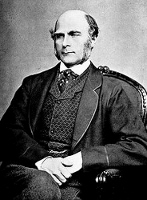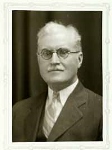Was there a eugenics movement in America? If you haven’t heard of eugenics it is the study or belief in the possibility of improving qualities of the human species or human population by discouraging reproduction by persons having genetic defects or presumed to have inheritable undesired traits (negative eugenics) or encouraging reproduction by persons presumed to have inheritable desirable traits (positive eugenics) Does this sound familiar?
 Eugenics was a movement to improve the human species by controlling hereditary factors in mating. The eugenics movement began in the late 1800s in Britain. Francis Galton, an English scientist, coined the term in 1883 and founded the Eugenics Society of Great Britain in 1908. The American Eugenics Society was organized in 1926.
Eugenics was a movement to improve the human species by controlling hereditary factors in mating. The eugenics movement began in the late 1800s in Britain. Francis Galton, an English scientist, coined the term in 1883 and founded the Eugenics Society of Great Britain in 1908. The American Eugenics Society was organized in 1926.
The origin of Eugenics in America started with Albert Ochsner, professor of surgery at the University of Illinois. In 1899 he published, Surgical Treatment of Habitual Criminals. He bluntly wrote, “If it were possible to eliminate all habitual criminals from having children, there would soon be a very marked decrease in this class.” While this is definitely not politically correct today, his list of advantages of dealing with criminals using vasectomy was:
1. It would dispense with hereditary criminals from the father’s side.
2. Aside from being sterile the criminal is his normal self.
3. It would protect the community at large while not harming the criminal
4. The same treatment could reasonably be suggested for chronic inebriates, imbeciles, perverts and paupers.
Eugenics was accepted and procedures were carried out without any legal authority in the United Stated. The first state to introduce a compulsory sterilization bill was Michigan in 1897, and Indiana became the first state to enact sterilization legislation in 1907. In time 32 states had eugenics programs permitting sterilization of insane and feeble minded individuals and 12 states included sterilization of criminals. While California had the highest number of sterilizations, North Carolina’s eugenics program was the most aggressive of the those states. Over 60000 men were sterilized in the United States from 1909-1924. By the 1960’s, the eugenic sterilizations slowed to a trickle and eventually stopped as many state statues were overturned due to legal challenges.
Minnesota was one of 32 states that had eugenics program permitting sterilization of insane and feeble minded individuals. The following information on eugenics movement in Minnesota is from the library in Minnesota Historical Society.
 In the early 1920s, Charles Fremont Dight, a physician in Minneapolis, launched a crusade to bring the eugenics movement to Minnesota. He combined the moral philosophy of eugenics with socialism and espoused the idea that the state should administer reproduction of mentally handicapped individuals. His main lines of approach included eugenics education, changes in marriage laws, and the segregation and sterilization of what he called “defective” individuals.
In the early 1920s, Charles Fremont Dight, a physician in Minneapolis, launched a crusade to bring the eugenics movement to Minnesota. He combined the moral philosophy of eugenics with socialism and espoused the idea that the state should administer reproduction of mentally handicapped individuals. His main lines of approach included eugenics education, changes in marriage laws, and the segregation and sterilization of what he called “defective” individuals.
Dight organized the Minnesota Eugenics Society in 1923 and began campaigning for a sterilization law. In 1925 the Minnesota legislature passed a law allowing the sterilization of the “feeble–minded” and insane who were resident in the state’s institutions. For the next several legislative sessions Dight fought unsuccessfully for expansion of the law to include sterilization of the “unfit” who lived outside of institutions.
Dight continued his legislative efforts as late as 1935. He spoke and wrote on the subject of eugenics, including over 300 letters to Minneapolis daily newspapers, a 1935 pamphlet on the History and Early Stages of the Organized Eugenics Movement for Human Betterment in Minnesota, and a 1936 book entitled Call for a New Social Order. In 1933 he sent a letter to Adolph Hitler and included with it one of his letters to the editor in which he commended Hitler’s work in Germany.
The Minnesota Eugenics Society became moribund by the early 1930s. Dight died on June 20, 1938, in Minneapolis. He left his estate to the University of Minnesota to found what became the Dight Institute for the promotion of Human Genetics.



